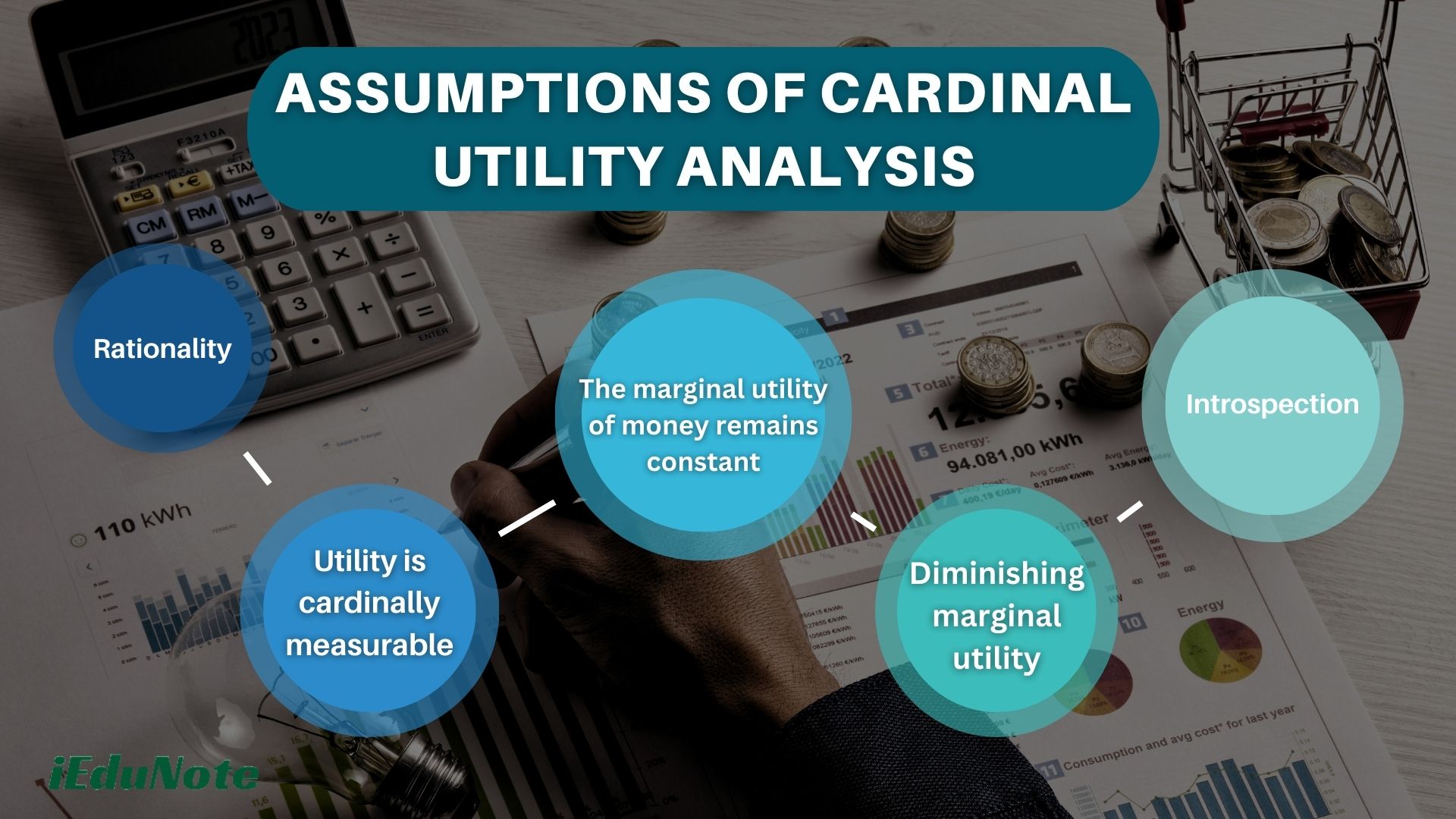Human wants are unlimited and they are of different intensity. The means at the disposal of a man are not only scarce but they have alternative uses. As a result of scarcity of resources, the consumer cannot satisfy all his wants. He has to choose as to which want is to be satisfied first and which afterward if the resources permit. The consumer is confronted in making a choice.
For example, a man is thirsty. He goes to the market and satisfies his thirst by purchasing Coca-Cola instead of tea. We are here to examine the economic forces that make him purchase a particular commodity. The answer is simple. The consumer buys a commodity because it gives him satisfaction. In technical terms, a consumer purchases a commodity because it has utility for him. We now examine the tools used in the analysis of consumer behavior.
Assumptions of Cardinal Utility Analysis

The main assumptions or premises on which the cardinal utility analyses are made are as follows:
Rationality
The consumer is rational. He seeks to maximize satisfaction from the limited income at his disposal.
Utility is cardinally measurable.
Utility can be measured in cardinal numbers such as 1, 3, 10, 15, etc. The utility expressed in imaginary cardinal numbers tells us a great deal about the preference of the consumer for a good.
The marginal utility of money remains constant
Another important premise is that the marginal utility of money spent on the purchase of a good or service should remain constant.
Diminishing marginal utility
It is also assumed that the marginal utility obtained from the consumption of a good diminishes continuously as its consumption is increased.
Introspection
It also assumes that, from one’s own experience, it is possible to draw inferences about other persons.
Criticism of Cardinal Utility Analysis/Approach
Pareto, an Italian Economist, severely criticized the concept of cardinal utility. He stated that utility is neither quantifiable nor addible. It can, however, be compared. He suggested that the concept of utility should be replaced by the scale of preference. Hicks and Allen, following in the footsteps of Pareto, introduced the technique of the indifference curve